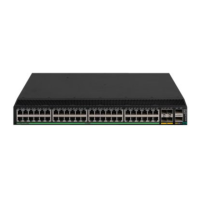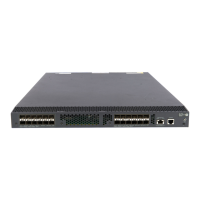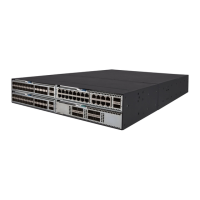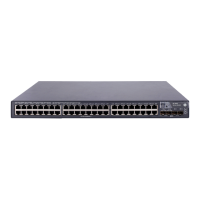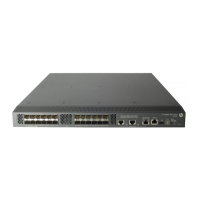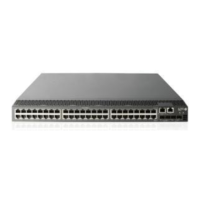70
Ste
Command
Remarks
9. Associate the traffic class
with the traffic behavior in
the QoS policy.
classifier classifier-name behavior
behavior-name
By default, no
class-behavior
association is configured
for a QoS policy.
10. Return to system view.
quit N/A
11. Apply the QoS policy.
• Applying the QoS policy to an interface
• Applying the QoS policy to a VLAN
• Applying the QoS policy globally
Choose one of the
application destinations
as needed.
12. (Optional.) Display traffic
redirecting configuration
information.
display traffic behavior user-defined
[ behavior-name ]
Available in any view.
Configuration example
Network requirements
As shown in Figure 21:
• Device A is connected to Device B through two links. At the same time, Device A and Device B are
each connected to other devices.
• Ten-GigabitEthernet 1/0/2 of Device A and Ten-GigabitEthernet 1/0/2 of Device B belong to
VLAN 200.
• Ten-GigabitEthernet 1/0/3 of Device A and Ten-GigabitEthernet 1/0/3 of Device B belong to
VLAN 201.
• On Device A, the IP address of VLAN-interface 200 is 200.1.1.1/24, and that of VLAN-interface
201 is 201.1.1.1/24.
• On Device B, the IP address of VLAN-interface 200 is 200.1.1.2/24, and that of VLAN-interface
201 is 201.1.1.2/24.
Configure the actions of redirecting traffic to an interface so that:
• Packets with source IP address 2.1.1.1 received on Ten-GigabitEthernet 1/0/1 of Device A are
forwarded to Ten-GigabitEthernet 1/0/2.
• Packets with source IP address 2.1.1.2 received on Ten-GigabitEthernet 1/0/1 of Device A are
forwarded to Ten-GigabitEthernet 1/0/3.
• Other packets received on Ten-GigabitEthernet 1/0/1 of Device A are forwarded according to the
routing table.
Figure 21 Network diagram

